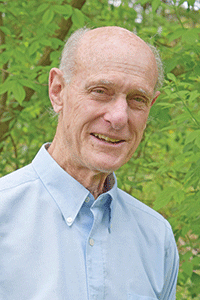“We had one tin wash dish and one clean towel each week,” recalled 87-year-old Bridgette M. (O’Brien) Hennessy while reflecting on more than four decades of teaching (about 1908 to 1956) at Vinegar Hill School between Money Creek and Rushford before retiring at age 70. “The water was carried from a neighbor’s house, and we all drank from the same dipper. There was never an epidemic of illness.”
Back in the first decade of the 1900s, she recalled “six kerosene lamps held in brass holders high on the walls,” six in all with three on each side of the one-room school.
Hennessy, who had taught for the previous three years at city schools in Wisconsin, was disappointed to find a more primitive situation in rural one-room schools out west in Minnesota.
“The grades were not organized. They had no piano for music, but we could sing. We did have a furnace in the school building and a full basement. But the teacher had to pay for someone coming in to make the fire each morning. There was much timber in the district, and the furnace burned oak cordwood, which was purchased by the district.
In addition to fewer physical facilities available for rural education, Hennessy soon faced other challenges she had not encountered in city schools. However, she proved more than capable of adjusting.
“The pupils were very neat and clean and anxious to learn,” she remembered. “I had an attendance of 42 pupils – when they came. But this being a farming community, the older boys and girls could attend school only during the winter and early spring.
“They felt out of place not being able to acquire full-time attendance. They were much older than the ones in their same grade, so I put them in a class by themselves and called them my senior eighth graders. They learned very fast for such a short time of school.”
As would also be true in decades to come, the school was a center of both community activity, pride and identity in small towns and rural townships. “There were many picnics and school functions in which everyone did their share and took part,” she noted. “The school was a community project.

Photo courtesy of the Houston County Historical Society
“On the first Arbor Day, we cleaned up the schoolyard and planted trees and shrubs. Everyone took an interest in school then.”
Hennessy was the first college graduate to teach at Vinegar Hill. Many one-room school students were taught by recent high school graduates who had then completed a teacher training course and passed Minnesota’s state teachers examination.
Growing up in Wisconsin, Hennessy graduated from high school at age 18 in 1904, then graduated from a teacher training school that summer before practice teaching in Wisconsin Rapids, Wis. While teaching two years in Oshkosh, Wis., she completed summer courses at the State Teachers College.
She then received a letter from a relative in Rushford, who said they needed a teacher. Hennessy applied, was accepted and was off to Minnesota. Although she had a college education and lifetime teaching certification in Wisconsin, she still had to take the Minnesota exam. She had no trouble passing. “I received (a) 100 percent grade in a rather difficult spelling word test. This made me very happy.”
Like most educators of any era, Hennessy most valued the relationships. “To this day, I remember the names of my students and have gone to visit them. They still have respect for their teachers and tell me that they really felt like they were accomplishing something in my class.
“I really have never discontinued teaching,” she confided with pleasure.
“After my husband died and my own children had grown up, I taught some more. I went back to school to make up more hours of credit. I will never give up teaching. I’ve helped all my grandchildren with their schoolwork and this year, I helped a sixth grade girl with her arithmetic problems.”
At age 87, Hennessy wrote, “I still receive letters and cards all through the year from the pupils I used to teach nearly 70 years ago. This makes me very happy and keeps my mind young. I have enjoyed my years as a teacher very much.”
These reflections were first published in a magazine in February of 1974 and then reprinted in a 1978 Houston County newspaper article.


Leave a Reply